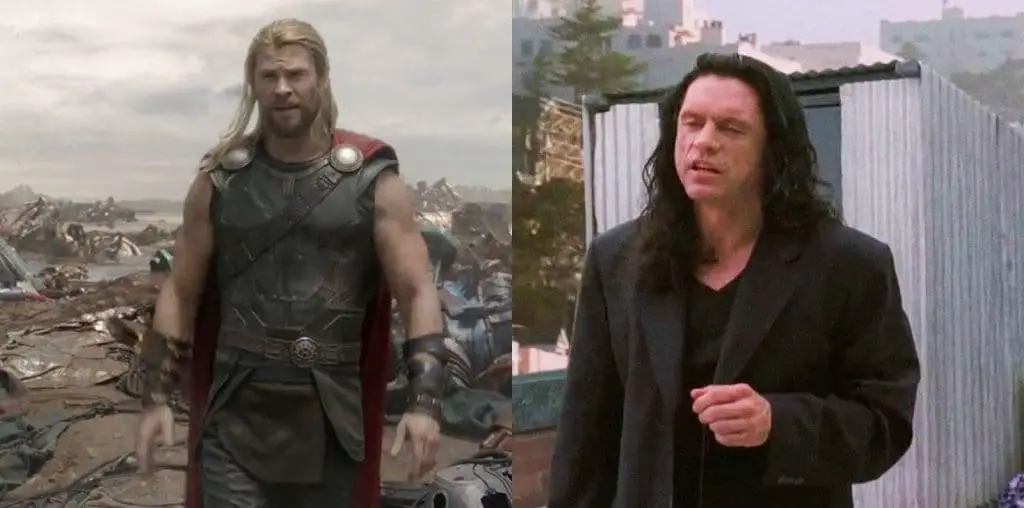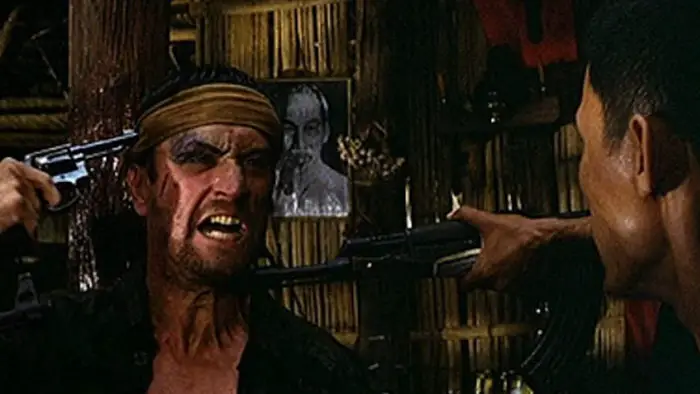
BOOTLEG FILES 289: “The Execution of Mary, Queen of Scots” (groundbreaking 1895 short filml).
LAST SEEN: Available on numerous web sites.
AMERICAN HOME VIDEO: As part of 2005 DVD release of Edison shorts.
REASON FOR BOOTLEG STATUS: Public domain status.
CHANCES OF SEEING A COMMERCIAL DVD RELEASE: You can buy it – but, hey, you can also see it for free!
I recently saw the coming attraction for the new “Transformers” flick, and in viewing its wall-to-wall knockabout I began to wonder where movie special effects actually began. I always assumed it was the result of the pioneering work of French filmmaker Georges Melies, but it appears that special effects has its origins in New Jersey.
Why New Jersey? Well, that was the home of Thomas A. Edison’s operations. Edison and his merry band of inventors perfected the motion picture technology on this side of the Atlantic, and they used their new tools to create a series of short films. But these films were not meant for auditorium projection. Instead, they were to be viewed in a machine called the Kinetoscope, which was basically a large cabinet with a viewfinder opening that enabled an individual to watch a film loop.
The kinetoscopes were initially a hit when they first appeared in arcades around 1894, but soon their popularity declined – people became bored with selection of films that Edison was producing. To spice things up, Edison (or at least whoever was in charge of the actual film productions) decided that something different was needed. In this case, special effects were called in, along with violence and (unexpectedly) cross-dressing.
The film in question was “The Execution of Mary, Queen of Scots.” The Edison fun bunch clearly assumed that everyone knew the story about the rise and ruin of the silly Scottish monarch, so they literally cut to conclusion of her tumultuous life. The film, however, does not remain faithful to the recorded accounts of Mary’s death. As presented here, a blindfolded Mary is ushered directly to chopping block and the executioner strikes a single fatal blow with his axe before lifting her severed head for display. In reality, Mary engaged in an elaborate undressing in which she removed black outer gown plus two petticoats and a corset, leaving her in a red chemise. Plus, the executioner struck either two or three blows (it was a botched job), and supposedly Mary’s head came out of the executioner’s hand because he grabbed it by the hair, not realizing Mary wore a long wig to hide her short grey hair.
So how was the beheading accomplished? Very simply, Mary is brought to kneel at the chopping block and place her head down. At that point, the camera was stopped and the actor departed while a mannequin dressed as Mary was brought in. The camera was started again and the executioner’s axe fell on the mannequin. If you watch the film carefully, you will notice the axe does not fall on the neck, but at an area between the shoulder blades – with executioner seemingly pushing the torso of the body down to the ground.
If you look even more carefully, you will notice the military guard watching the execution are dressed in the uniforms of the Vatican’s Swiss Guards and not as the soldiers of 16th century England. No reason for that is known.
What is not immediately apparent is that the actor playing Mary is not a woman. Edison used his own staff as the casts of those films, but apparently there were no women on the payroll at the time. Thus, a short man named Robert Thomae was recruited to play Mary. Since a large blindfold was wrapped around Mary’s face, it was difficult to see what the doomed character actually looked like. In putting on women’s clothing to play the Scottish queen, Thomae earned the distinction of being the first cross-dresser in movie history. (There are two other “women” in the film who watch the beheading, and one can easily assume they are also men in drag.)
“The Execution of Mary, Queen of Scots” also initiated a film trend that persists to this day. James Kendrick, in his new book “Hollywood Bloodshed: Violence in 1980s American Cinema,” notes that this film “illustrates early cinema’s fascination with both violent spectacle and the various means in which the cinematic apparatus could be manipulated to create the illusion of realistic violence.”
Alfred Clark, who is credited as the director of this film, oversaw its shoot on August 28, 1895. The film was edited and rushed out to the kinescopes. Although the film only ran less than 20 seconds, it made quite an impact. Reportedly, unsuspecting audiences of that distant era were gravely upset over the film – many people, having no clue how the stop-motion substitution was accomplished, genuinely believed that a woman was killed in the film! (Thus began another film tradition – the legend of the snuff film.)
The Edison crew reacted with delight to the reaction to this film, which was later re-released under the title “The Execution of Mary Stuart.” Clark was called back to direct more brief but gruesome films, including a recreation of the fiery death of Joan of Arc and two Old West efforts that featured an Indian scalping and a lynching, respectively. By 1901, the Edison gang achieved an apotheosis of sorts by recreating the assassination of President William McKinley for their cameras – and passing it off as a newsreel of the actual event. Movie violence, accompanied by special effects to enable the presentation of the mayhem and slick marketing to sell it to an unsuspecting audience, became a way of life.
Mercifully, the film did not disappear (a fate that befell too many silent films.) A print of “The Execution of Mary, Queen of Scots” survived – albeit in a somewhat murky state – and was acquired by the Museum of Modern Art in New York. The film was included on the Kino on Video DVD “Edison: The Invention of the Movies” that was released in 2005. However, this brief short is in the public domain, thus allowing anyone to reproduce it. Thus, a large number of dupes can be found on a variety of Internet web sites.
It is impossible to conceive that Alfred Clark, Robert Thomae, Thomas Edison, and the rest of the guys involved in “The Execution of Mary, Queen of Scots” could have possibly imagined what their little film would unleash. So, the next time you get squeamish or agitated at excessive violence or terrifying movie special effects, you know who to blame for the madness!
IMPORTANT NOTICE: The unauthorized duplication and distribution of copyright-protected material, either for crass commercial purposes or profit-free s***s and giggles, is not something that the entertainment industry appreciates. On occasion, law enforcement personnel boost their arrest quotas by collaring cheery cinephiles engaged in such activities. So if you are going to copy and distribute bootleg videos and DVDs, a word to the wise: don’t get caught. Oddly, the purchase and ownership of bootleg videos is perfectly legal. Go figure!

